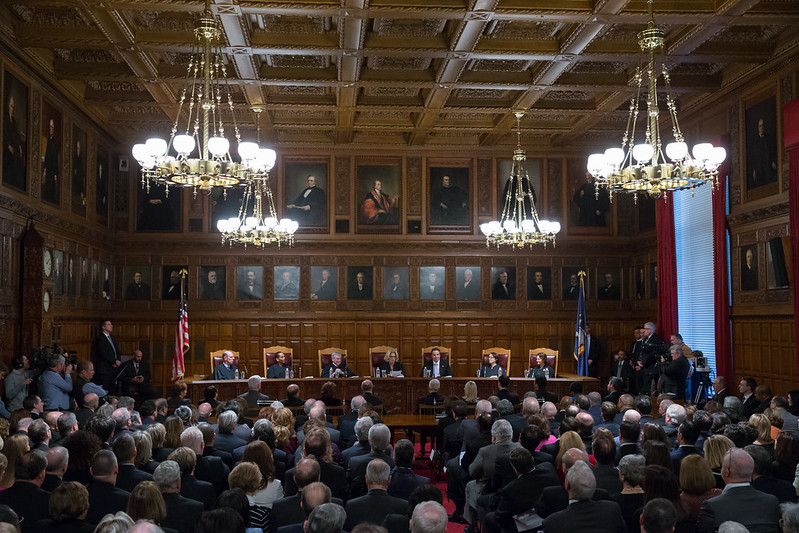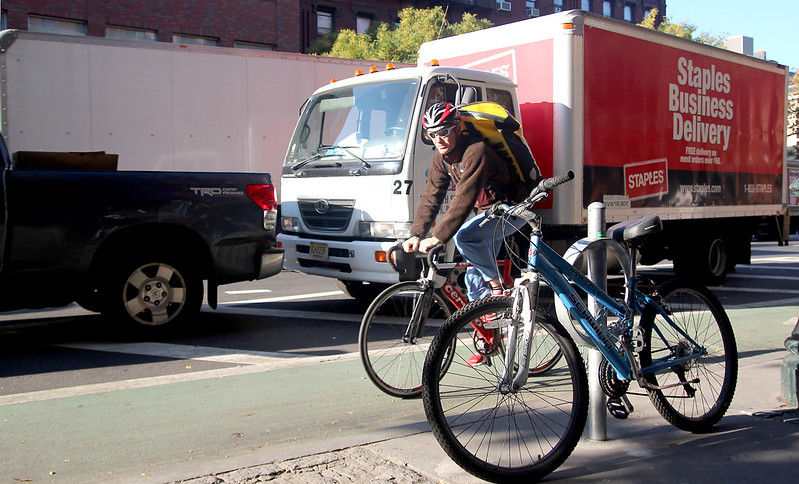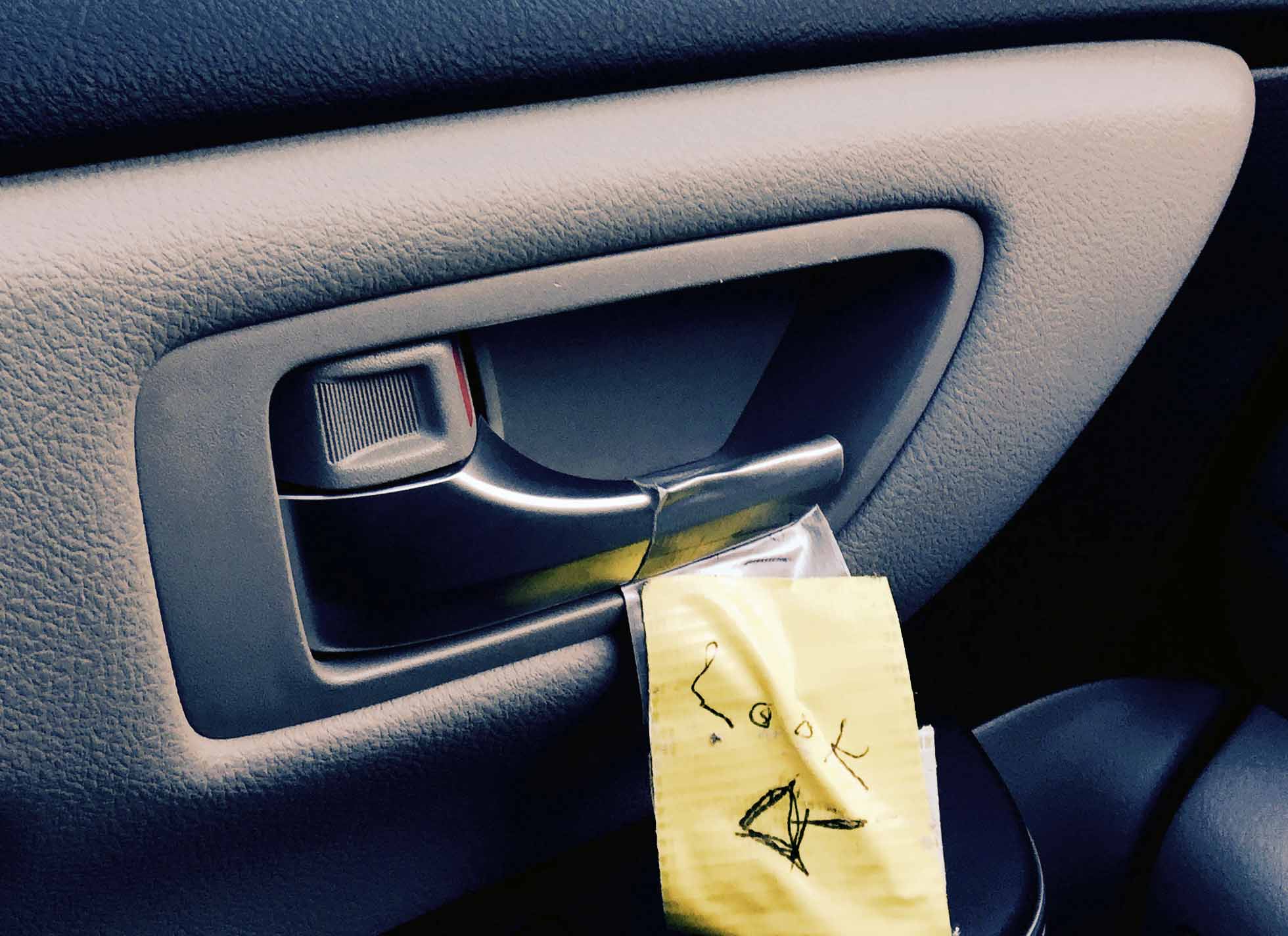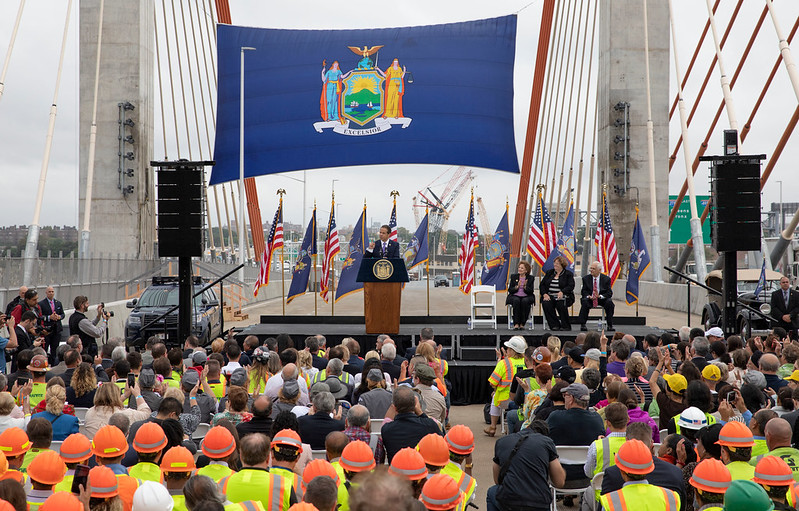Real Criminal Justice Reform Requires Standing Up to Fear-Mongering

(photo: Governor's Office)
Nearly five years ago, Jerome Murdough, an African-American Marine Corps veteran, died on Rikers Island due to a combination of injustice, inhumanity, and medical neglect. Afflicted by homelessness and mental illness, Murdough tragically passed away when temperatures in his cell reached 100 degrees – heat that was contraindicated with his medicine – and he baked to death. The reason for this death sentence: He was cold one night and sought shelter in a public housing stairwell, where he was arrested for trespassing and jailed on $2,500 bail.
All across the country, in response to tragic injustices like those faced by Jerome Murdough, the movement to end mass incarceration is making real gains. After decades of oppressive policies, many policymakers are pursuing real solutions to shrink jail and prison populations and challenge the racial disparities that define the criminal legal system.
Reformers may have the momentum, but that doesn’t mean that the pro-mass incarceration lobby is finished. The lobby includes regressive prosecutors and sheriffs, as well as bail bonds companies that profit from the status quo. In New York, it looks a lot like they’re just getting started again, and their tactics are likely a preview of what we’ll see across the country as people demand more reforms.
Last April, when Governor Cuomo signed historic criminal legal system reforms into law, New York took a huge step towards addressing the systemic inequities of our current bail and discovery laws. The new laws, which take effect today -- January 1, 2020 -- will dramatically reduce the number of people held in pretrial detention and prevent prosecutors from unjustly withholding evidence.
No longer will our bail laws allow tens of thousands of people in poverty to be jailed every year while facing only alleged misdemeanors and non-violent felonies while the wealthy pay bail and remain free until and unless they receive a sentence upon conviction. No longer will our discovery law blindfold people to the evidence, a practice that has fueled wrongful convictions, ruined lives, and cost millions in legal settlements.
These reforms respond to the urgency of a system that often allows a person’s race and income to determine their freedom -- a system that tramples on the idea that a person is innocent unless they are proven guilty.
And now, as we begin implementation, those with a vested interest in keeping this system unfair for low-income New Yorkers and people of color are trying to scare lawmakers into undoing the fragile progress. They are mobilizing across the state with dire warnings of what might go wrong – as if people are not hurt by the existing system every day.
As public defenders, we see firsthand the impact that jailing has on the criminal legal system, as we routinely represent clients who languish in jail for months, if not years, simply because they are unable to afford bail money. They miss milestones like graduations, weddings, and funerals while they are detained away from their families and friends, losing jobs and housing, and even losing their children to foster care -- all without ever having been convicted of anything. Not to mention the grave risk to their lives: 372 people have died in New York City jails since 2001.
Many of the people we serve feel immense pressure to plead guilty simply because it would get them out of jail quicker than waiting for a trial would. Research shows that being held in pretrial detention increases both the likelihood of conviction and the length of prison sentences, though many are released from jail after accepting a plea deal.
Prosecutors understand the power and leverage that a broken pretrial system offers them, wielding that unfair advantage to coerce plea deals: 95% of all cases end in plea deals or dismissals, not trials. Adding to the unjust and coercive nature of this system, the vast majority of all of these pleas are negotiated with one side left in the dark because of the discovery law.
Of course, prosecutors want to roll back these reforms. The old system helped artificially increase their conviction rates, or to appear “progressive” by authorizing alternatives to detention that include constant and invasive surveillance when a person should be released outright pending trial. A deck stacked in their favor helps ensure they exercise outsized control over outcomes, regardless of the facts of a case.
When prosecutors claim that these pretrial reforms will result in ‘criminals’ running free and skipping their court dates – dehumanizing and inaccurate language, to be sure – it is important to remember that charitable bail funds already prove them wrong. For example, Bronx Freedom Fund found that 96% of the more than 2,500 people for whom they paid bail — each and every one presumed innocent — attended all of their court dates; 55% of those cases were entirely dismissed.
Moving past the fear-mongering, it’s important not to lose sight of the victims of the old system. It is people like Jerome Murdough and Kalief Browder and India Cummings and Robert Ingalsbe and Selmin Feratovic and Layleen Polanco who have lost their lives because of brutal jail conditions and the violence and despair they breed.
New York must show the nation that we can make real strides toward justice in our criminal legal system. Too many lives have already been ruined not to implement these reforms as required under the law.
***
Justine Olderman is the Executive Director of the Bronx Defenders. Lisa Schreibersdorf is the Executive Director of Brooklyn Defender Services. Tina Luongo is the Attorney-in-Charge of the Criminal Defense Practice at the Legal Aid Society. Stan German is the Executive Director of New York County Defender Services. Matt Knecht is the Managing Director of Neighborhood Defender Services of Harlem.
***
Have an op-ed idea or submission for Gotham Gazette? Email This email address is being protected from spambots. You need JavaScript enabled to view it.
A New Year’s Resolution to Save Lives: Do The Dutch Reach

(photo: New York City Department of Transportation)
One of the New York City Department of Transportation’s bicycling safety tips, “Watch out for car doors,” seems straightforward until a door unexpectedly opens and catapults you into oncoming traffic. Several of this year’s bicycling fatalities came from dooring incidents, an action for which drivers face a whopping $150 fine and slap on the wrist if they face any consequences at all. The driver who doored me earlier this month on Fulton Street in Brooklyn seemed perfectly indifferent to the situation.
Opening a car door carelessly is illegal, and not just in New York City. Article 24 of the United Nations 1968 Vienna Convention on Road Traffic prohibits opening a vehicle door “without having made sure that to do so cannot endanger other road-users.” Though the United States is not one of the 36 signatories or 78 parties bound by the convention, much of America follows similar rules, including New York.
Despite Mayor de Blasio’s commitment to Vision Zero, which aims to eliminate traffic-related deaths in the five boroughs, cycling fatalities are on the rise. De Blasio’s original plan had noble aims, including: strengthen laws that punish unsafe driving, amend driver education to improve car-bicycle interactions, redesign priority intersections, and add new bike lanes to our streets. Five years later, we have 82 miles of new bike lanes, a large number of redesigned intersections, and more failure-to-yield summonses, but otherwise a wishlist of legislative activity and a single dooring-related line in the New York State driver’s manual. All the while, 29 cyclists have died this year, each story an unnecessary tragedy. To call these crashes “accidents” is to ignore that there was a driver sitting behind the wheel, or opening a car door, every time a vehicle barrelled into someone.
New York City is facing monumental challenges as it enters a new decade. Our subway is languishing. NYCHA housing conditions are deplorable. We need to build new borough-based facilities for our jail population. And climate change may flood us before we address any of these. With so many competing priorities, I understand why bicycle safety is not at the top of most people’s lists.
But looking out for cyclists before opening a car door is a straightforward fix to a devastating problem. In a time when we can be overwhelmed by the complexity of our city’s troubles, let alone what’s happening nationally and globally, looking before you open could be the easiest life-saving New Year’s resolution you’ve ever made.
City Council Speaker Corey Johnson talks about breaking New York City’s “car culture” with new bike lanes, bus lanes, and pedestrian plazas. His plans sound great, but they will take time. And during that time, cyclists will continue to die. We need to also think smaller and take some personal responsibility for the safety of our streets. If every driver and passenger looked carefully before opening a car door, using a simple practice called the Dutch reach -- using one’s far hand to pull the handle while also looking to see if it’s clear -- we would have a safer city. No new construction required.
 Dutch reach reminder (by Barbara Beckwith via Dutch Reach Project)
Dutch reach reminder (by Barbara Beckwith via Dutch Reach Project)
I do not pretend that cyclists are without blame. I have seen them ignore traffic lights, swerve in and out of bike lanes, salmon, and ride in darkness without any reflective gear or lights. These irresponsible cyclists give us all a bad reputation. Ultimately, though, there is an uneven power dynamic at play: my bicycle and I weigh a combined 165 pounds compared to a car’s approximately 3,900. When I ride, I strap some styrofoam to my head, which pales in comparison to a car’s airbags and crumple zones. If there is a turf war for space on the road, the outcome is simple: my bicycle and I will lose. Anyone who pretends cyclists and vehicles are on a level playing field has never been thrown into traffic by an unexpectedly opening door.
2020 should be the year cycling fatalities plummet to zero, and we don’t need to wait for long-promised infrastructure to make it happen. (A green stripe of paint along a narrow street doesn’t seem like much protection anyway.) One simple way to reduce the number of cyclists who die on our streets is to look before we open our car doors. It sounds almost silly in its simplicity. But it will save lives.
***
Benjamin Heller is a graduate student at NYU's Robert Wagner School of Public Service. On Twitter @BenjaminHeller0.
***
Have an op-ed idea or submission for Gotham Gazette? Email This email address is being protected from spambots. You need JavaScript enabled to view it.
New York City Needs Design-Build; The Governor's Signature Can Deliver It

(photo: Mike Groll/Governor's Office)
New Yorkers are famous for our limitless ambition, but the City’s potential is limited by our government’s ability to build and improve public infrastructure to advance equity, speed commutes, adapt in the face of climate change, and boost our economic competitiveness. Simply put, we can’t grow if we can’t build our public infrastructure. Thankfully, Governor Cuomo can expedite construction and repairs to schools, hospitals, roads, bridges, and much more, cost-effectively, by signing the NYC Design Build Act.
The NYC Design Build Act amends the procurement laws in two important ways: it allows the city government to combine a project’s architects, engineers, and construction teams into one contract and one collaborative team. This way, the design team is forced to wrestle with the issues of construction costs and schedules in a way they do not do today. Second, the NYC Design Build Act would allow New York City to choose construction contractors that can deliver the best value along a range of factors including quality, innovation, and schedule, as opposed to just choosing the lowest bidder.
These changes will encourage better planning and understanding of the total costs of the project up front, which should clear many of the risks and delays that cause these projects to drag on interminably.
Going forward, the Legislature should extend the common-sense design-build strategy to all state and city agencies. The Legislature must find other ways to reduce the cost of operating and maintaining the infrastructure we already have, including through public-private partnership legislation. Otherwise, New York City will fail to keep pace with our peers in the nation and around the world. But, in the meantime, the NYC Design Build Act is a good first step, and we encourage Governor Cuomo to sign it.
***
Assemblymember Robert Rodriguez represents parts of Manhattan and is the Assembly sponsor of the NYC Design Build Act. Sarah Fitts and Jamie Rubin are members of the Regional Plan Association Board. Fitts is also an attorney working in energy and infrastructure; Rubin is CEO of Meridiam North America, which develops infrastructure projects in the United States and Canada, and was former Commissioner of New York State Homes and Community Renewal.
***
Have an op-ed idea or submission for Gotham Gazette? Email This email address is being protected from spambots. You need JavaScript enabled to view it.




